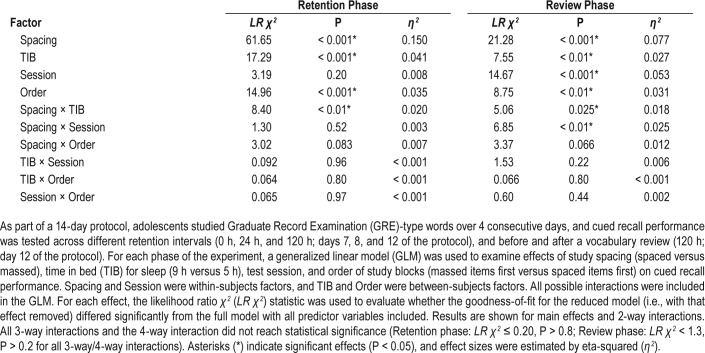Figure 2.
Vocabulary learning and cued recall performance in response to sleep restriction. (A) Learning curves for recall of spaced items and massed items (20 items per condition) are shown for groups of adolescents exposed to either 9 h of time in bed (TIB) or 5 h of TIB for sleep after each day of learning. Students were tested immediately after each study session. For items that were massed, test scores are shown separately for those items that had already been studied (black traces), and for all 20 cue words (red traces) including those items that had yet to be encoded. (B) After spaced items and massed items were studied an equal number of times, there was a significant interaction between study spacing and TIB (LR χ2 = 8.40, P < 0.01), whereby sleep restriction was associated with a significant decrease in cued recall performance on massed items (indicated by the red asterisk, P < 0.05), but not on spaced items. (C) Following a review session on day 12 in which students were shown all word pairs one more time, a final cued recall test was administered (day 12*) in which test scores on massed items improved substantially. The mean ± SEM is shown for performance on each cued recall test. Additional statistical comparisons during the retention phase and review phase are summarized in Table 2 and in the main text.
Table 2.
Statistical summary of factors affecting cued recall performance.


